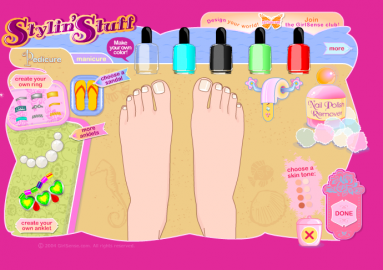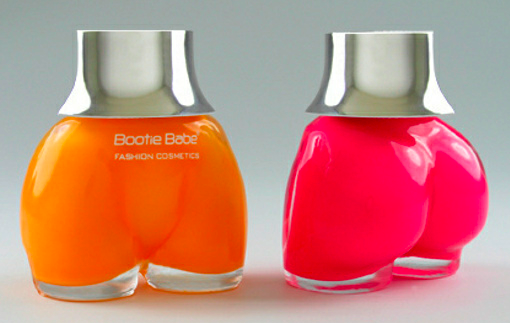What's going on in beauty this week, from head to toe and everything in between.
From Head...
Chinese beauty: This piece on buying habits in China gives beauty products only a passing mention, but it's worth reading if you're interested in international consumerism. Particularly of note here is the Chinese emphasis on conspicuous consumption—goods seen in public are far likelier to be luxury brands than goods consumed privately, which puts beauty products (consumed privately but seen publicly) in a sort of odd zone. The article makes note of how beauty products must help a woman "move forward"; coupled with the Chinese preference for natural-looking beauty products, Chinese women may be in even more of a product paradox than Americans.
Chinese beauty: This piece on buying habits in China gives beauty products only a passing mention, but it's worth reading if you're interested in international consumerism. Particularly of note here is the Chinese emphasis on conspicuous consumption—goods seen in public are far likelier to be luxury brands than goods consumed privately, which puts beauty products (consumed privately but seen publicly) in a sort of odd zone. The article makes note of how beauty products must help a woman "move forward"; coupled with the Chinese preference for natural-looking beauty products, Chinese women may be in even more of a product paradox than Americans.
 Next up: Shampoo and cuticle-cutting video games.
Next up: Shampoo and cuticle-cutting video games.
...To Toe...
Pedigame: Team Beheld, I'll be honest and let you know that sometimes it's hard to find pedicure-related news every week to keep up this "from head to toe" business I started lo so many months ago, and now that I've gone and made fun of the faux newsworthiness of men getting pedicures, it'll be even tougher. But my other go-to pedicure news bit is pedicure video games, of which there are many, and this interview at The Mary Sue with the curator of FEMICON, "the feminine computer museum," is juuuust tangentially related enough for me to include it here. Moreover, it's fascinating (this from someone who hasn't played a video game since Super Mario Brothers). "With FEMICOM, I want to provide a historical snapshot, a catalog, that says, 'Here lies the evidence of several decades of video game and software and web media that attempted to inspire and delight.' If we’re confronted with a pile of harmful stereotypes, let’s talk about that. If we’ve been wrong to criticize a game for not being more like Halo, let’s talk about that, too."
...And Everything In Between:
On the stand: The witness list in the trial of Rajat Gupta, former Proctor & Gamble executive who was arrested for insider trading, is basically a cast list of major players in the world's biggest personal-care company. I usually try not to be a bloodhound, but: Let the game begin!
On the money: The friendly folks at NASDAQ break down American beauty companies' positioning in emerging global markets. And in what is surely a first, a business writer focusing on the beauty industry resisted all urges to indulge in bad wordplay ("the stocks got a makeover"! "It's face-forward for Avon"!) in (her?) prose.
Northern light: Are Northern European women more likely to embrace natural and organic cosmetics? All signs point to yes. (Side note: The Swedish city of Malmö has a goal of having only organic food served in its public catering by 2020? As someone who lived in a city that cut out recycling for a while because of budget cuts, my jaw is on the floor.)
Sunny days ahead: The FDA ordered comprehensive new sunscreen regulations last year, but recently gave the industry six more months to implement them—i.e., past the summer, when Americans get the most sun exposure. And manalive, some senators are pissed.
Mad man: Adman David Leddick—who was gay and out during his career, which spanned the same era as Mad Men—shares what it was really like being gay in the industry at the time, and in doing so gives a few colorful anecdotes about major beauty clients. (Among them: "Miss Arden, you are a tyrant.")
Superbeauty: The site of Ray Kurzweil, champion of the singularity, turns its cyborg eye onto enhanced beauty products. I'm more interested in this in a meta sense than for anything the article actually says, because none of what's in this piece is news in the least if you're a reader of women's magazines, but here it's being treated as something with potential instead of something already available. The singularity just may be cosmetized.
Bad girls go everywhere: xoJane.com beauty editor Cat Marnell in a Vice interview on the impossibility of being a beauty-industry bad girl: "Bad girls don't get to splash water on their faces and say 'Almay.'"
Hard as nails: Scratch that. If you're hell-bent on being a beauty bad girl, you can shoplift $12,500 in products. I'm fascinated by this: Most beauty shoplifting of this scale is part of a crime ring, but it seems this woman just really liked nail polish.
Batik!: Refinery 29 has a guide to prints often lumped together as "ethnic" or "tribal," which is wildly encouraging. Most of the time fashion pages think they're being socially responsible if they feature a fair-trade necklace; this takes less of an Othering stance while recognizing that most of their readers probably aren't versed in Chinla vs. Ganado. (I certainly wasn't.)
Butt-shaped beauty products: Is there anything more I can really say about this?
Book, cover, etc.: In reading this piece about the role of awe in cosmetics packaging, I found myself feeling a tad smug, because I, of course, never fall prey to "awe-inspiring" packaging, preferring packaging that's cleaner, more clinical, tidier, minimalist. Which isn't me falling for marketing at all! (Pop quiz: Where do butt-shaped beauty products figure into marketing and awe? Go.)
Beauty products of 1812: "Two ounces of oil of sweet almonds, ditto of spermaceti; melting them in a pipkin over a slow fire." Of note in this piece about 19th-century beauty concoctions is a Canadian company called The Herb Wife, which bases its handmade products on recipes from medieval days. Zounds!
Literary makeovers: Attention New Yorkers: A night of makeovers, courtesy...the New York Public Library. June 22. (And hey, if you're not in New York, just swing by the splendid collection of literature/film character makeovers at Literature Couture. There's a whole series on Norse mythology makeovers!)
The black beauty standard: Tami Winfrey Harris skewers the whole "black ladies loooove their bodies!" thing. I see why the story is perpetrated, particularly by white members of the media: When, as a teenager, I first heard the whole "black girls like their bodies more than white girls" thing, it acted to soothe my privileged white guilt, like, "Oh, okay, so black women on average make less money than white women and are more likely to be victims of violent crime, but hey, they like their bodies, so at least there's that." That is: It told me more about my own relationship with my own body, and about my level of privilege, than it did about the experience of black women. It was shortsighted of me (to say the least), and really I wish I'd had these counterpoints available to me then.
On authenticity: Terri, one of the most thoughtful fashion bloggers out there, asks if it's possible to be authentic in the world of social media and self-branding.
"Our bodies are integral to our selves": Sally's gentle yet forceful litany of why body image matters made me catch my breath: "Because we are told that a certain weight, a certain set of proportions, a certain body type or shape will unlock happiness, and that we should do everything in our power to achieve those things." Even with the work I do here, I still fall into that trap of thinking my body can unlock happiness—if I can comfortably wear a dress I purchased 10 pounds ago, if my thighs become diminished like they were when I did little other than obsess about my food intake. I know better, but I don't always know better, and this post is a much-needed reminder.
Rule-breaking: Angie's characteristic way of striking the sweet spot between style guidelines and body positivity shines through in her musings on going beyond body type dressing.
Beauty U: Kjerstin Gruys shares her syllabus and gives a mini intro to her "Gender, Appearance, and Inequality" seminar, which is sort of making me edu-drool with discussion topics like beauty bias in romantic relationships, employment, and medicine.

